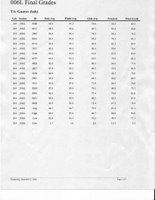NOTE I shall not be teaching this weeks lab. Liz will be coming to teach you Make sure one member from each group wears short so that you can perfom stretch reflex experiment Quiz 9 guide - Comparison between SAP and CAP
- How can CAP be applied to clinical applications
- Program used for SAP and the results obtained
- How and why were alpha and beta peaks different when recorded?
- What is the threshold stimulus, conduction velocity and latency
- Refractory periods both relative and absolute
- Different kind of graphs that you got as results
CNS,eye,ear,stretch reflex: lab preview In this lab we again identify few specimens: You will be given sheep brain structures on it, cow eye & we will have an ear model for stucture identification. Either of these will be kept in final exam for structure identification.
Sheep brain: Pages 95-97 Atlas
Cranial nerves: Page 91, fig 9.11 Atlas
Two ways to remember names of cranial nerves:
Oh
Oh
Oh
To
Touch
And
Feel
So
Good
Velvet
AHhhh…
On
Old
Olympic
Towering
Top
A Fin
And
German
Viewed
Single
Hops
Spinal cord: Can be divided into White matter and Gray matter.
-White matter consists of myelinated fibers
-Gray matter consists of cell bodies, dendrites and unmyelinated fibers which are subdivided into dorsal horns and ventral horns. Know function of dorsal and ventral horns.
-Identification of spinal cord model and slides of cerebellar cortex(cerebellum), cerebral cortex, spinal cord.
-Different cell types: Neruons and glia(different kinds of glial cells).
-Neurochemistry: Slides specific for different neurotransmitters
Eye:
Cow eye dissection
Do the blind spot test
Ear:
Model of ear
Do the test with audiometer
Other test of senses:
Two point discrimination
Mechanoreceptor study:
You will also be given cockroach leg with an aim to understand the sensory
mechanoreceptors. Try comparing this with hairs on your hand.
Stretch reflex:
Here you will try study the myotactic or stretch reflex. When you hit your knee with hammer, sensory neuron will transmit information to spinal cord. Spinal cord generates response which is passed onto motor neurons and you can see kicking of your leg (reflex). We will be using this knee-jerk response model to study myotactic reflex.
Grades Quiz 7: Class avg: 89.70, High:100, Low: 70
Worksheet 8: Class avg: 94.26, High:100, Low: 85








